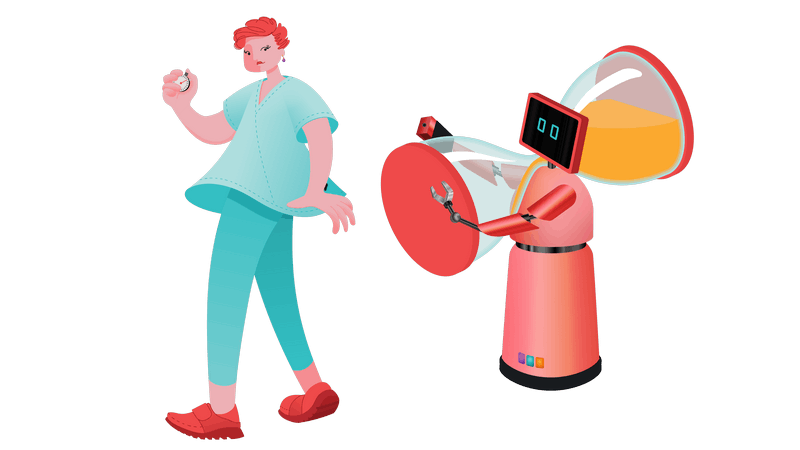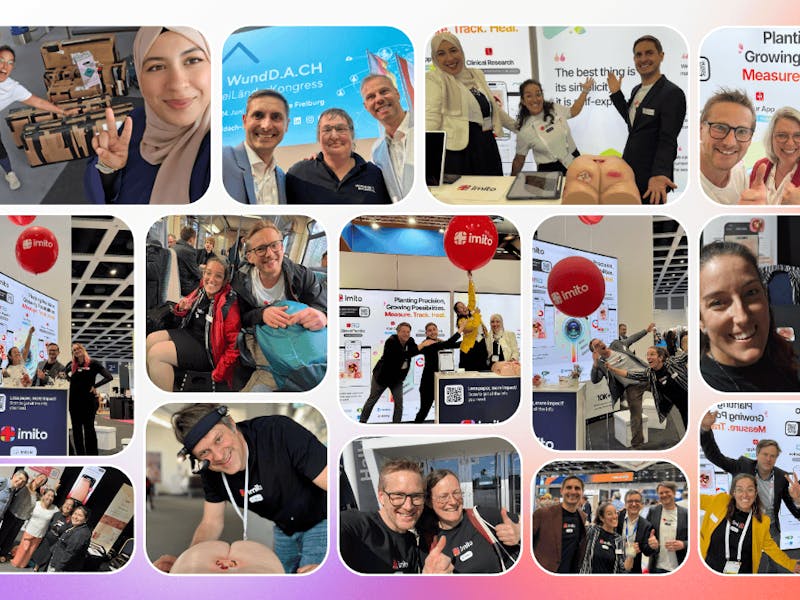Can you stand in? A sentence that every nurse fears. The reason for this is often the nursing staff shortage that has existed for years. Duty rosters are written, but often cannot be adhered to. It is difficult enough to reconcile family or family planning in shift work. Then there is the issue of “standing in”. Sometimes you talk about your experiences in your own environment. This often results in sentences like:
"Then say no."
Saying no is very difficult in our profession. We work in a team and in cases of illness, we are aware that there is a lot of work and that our colleagues need your support in caring for the patients. Furthermore, we feel a responsibility for the patients. Who takes care of them when there is no nurse there? We work with people, some of whom are life-threateningly ill or injured. We are supporters, listeners, and comforters and build a bridge between doctors and patients. But we not only feel this responsibility, no, we also have it in everyday life. We have to be concentrated, and well organized, carry out medical orders and prophylaxis, administer and distribute medication, administer infusions and give injections. There must be no mistakes because they could endanger someone's life. In order to protect not only us but also the patients, everything has to be documented down to the smallest detail, because what is not in the file is theoretically not done. Not everyone can bear this responsibility. Last but not least, you hear again and again: "I couldn't do that." Our skills are also often underestimated, mostly not by colleagues, but by outsiders. So high responsibility is sometimes paired with underestimation. But let's get to the real issue of time. Time is valuable, but time is sometimes scarce in the nursing context. This was very aptly formulated by Franz Sitzmann in issue 1 in 2016 in “The Nurse/ The Nurse”.
"Too little time for too much work"
But what might a typical day for a nurse look like? Well, we can only speak from personal experience. I would like to point out that there is no claim to completeness. This is one example of many (varies by the workspace, of course)
We tried to cobble together our experiences in internal medicine, cardiology, neurology, geriatric rehabilitation and community intensive care.
At around 6 a.m. you get to the ward and meet the colleagues from the night shift. You are handed over to the patient and can then set up the infusions, syringes, etc. for the first round in the next step. This often happens parallel to the handover. Not infrequently, the colleagues on the night shift did not have time to document and have to do this after the official end of the day. Various measures are carried out during the morning tour. Examples are blood pressure measurement, blood sugar measurement, infusion administration, injection administration, etc.
If we are in a "digitized" hospital, we have a laptop with us on which the measures can be ticked off and a short sentence can be written about the current status of the patient. It should be noted here that in the event of unforeseen events, such as an emergency, the documentation must be postponed. Working with people counts, but this does not mean that the obligation to provide documentation disappears. In addition to all this, support with personal hygiene can already be carried out. Some people may be wondering how this is supposed to work. Well, we all have organizational talents. Efficiency with too little time. What can be left behind, however, will be described later. And then comes the breakfast that wants to be distributed. Ideally, there are ward aids that provide some support in everyday life and that can continue to support you or document your washing during this time. At around 8:00 a.m. the preparation for the operations, if this is the case at the station, begins. Here, too, larger hospitals now have support from specialists from the Johanniter, for example, who accompany patients to procedures and examinations. The nurse should eat and drink something in between. Sure, there are days when you can sit down and take a break. These are exactly the situations in which you see us “drinking coffee”. But the downside is that this is not always the case. At the same time, support continues to be provided with personal hygiene, accompanies rounds, orders are carried out, bandages are changed, blood sugar is measured again before midday, prophylaxis is carried out, etc. The list is long. Of course, this is all very pointedly formulated, but there are such days. Oh, and don't forget to document! At 12 noon comes to lunch and final measures are carried out. Now it may be time to complete or catch up on the documentation. Organizational tasks follow. Our early shift ends with a handover and a tour of the room with the late shift colleagues. Closing time, or does the remaining documentation still have to be carried out?
In this exemplary early shift, one could see that many tasks should be completed at the same time if possible. You want to be able to use the time spent with the patient sensibly.
It is not uncommon for compromises to be made in terms of care. The reason is the lack of nurses and the beds are still fully occupied. As a result, a nurse has to care for even more patients than the staff ratio specifies. On some days it can be that you can only do a "cat wash" because the flood of tasks is too great. Furthermore, we are sometimes dependent on the help of relatives who can support us.
The documentation takes up a large part of the daily work. From a legal point of view, this is a protection for patients and caregivers. Is there a solution? In the long term, the shortage of staff must be counteracted, starting with making the profession more attractive again. Nursing schools have not been fully occupied by trainees for a long time. Certainly, more money must flow, but also appreciation.
Digitization is another point. There are still a few houses that document on paper or use a combination of paper and computers. Digitization belongs in the 21st century. Although this is progressing slowly, it is still indispensable. Of course, it is easier for "younger" generations to get used to digitization in general and to use it professionally. For this reason, extensive training is needed not to throw anyone in "at the deep end", because this can lead to dissatisfaction in a team. You don't want that.
In the field of wound documentation, to speak of imito, it is unfortunately still mostly the case today that you have to resort to the digital camera. The reason is that sometimes the technical requirements are not given, houses are not aware of digital solutions or there is a lack of money. A wound documentation solution should be as uncomplicated, quick and intuitive as possible. There should be no need for double-coupled documentation to save time. The photo documentation with an integrated measurement solution should end up directly in the electronic patient file. This is exactly what imito's solutions can offer. Surely imito can't change anything about the basic problems of lack of time, but at least shorten and simplify the documentation of wounds so that you don't spend hours recording a wound. imito offers imitoWound for this purpose. With this digital wound documentation solution, a wound can be photographed quickly and easily in the patient context, measured and documented without a ruler. imito also enables an assessment with multiple selections and notes to be filled out at the patient's bedside. In case of a lack of time, this can also be saved in the task list and edited later.
An internal hospital exchange can be realized via the so-called “medical Instagram”, imitoCam. It enables an interdisciplinary exchange of photos, videos and news. The saved trips and the time can then ideally be spent in patient care, and the wishes and habits (for which one otherwise has no capacity) of the patients can be taken into account.
If we take up the quote from the beginning of Franz Sitzmann from the nurse/nurse 2016: “Not enough time for too much work”, it is noticeable that this problem initially does not offer a short-term, satisfactory solution. Nevertheless, we can make steady progress with small steps and digital solutions, such as imito, to support this path into the future. Maybe the nurse can enjoy their coffee, holiday or free time in the future without fearing the next ring.
And who still has time and desire? Here's more on the subject of time and nursing staff shortages. In 2022, PwC published a study entitled:
”Lack of skilled workers in the German healthcare system 2022”.





